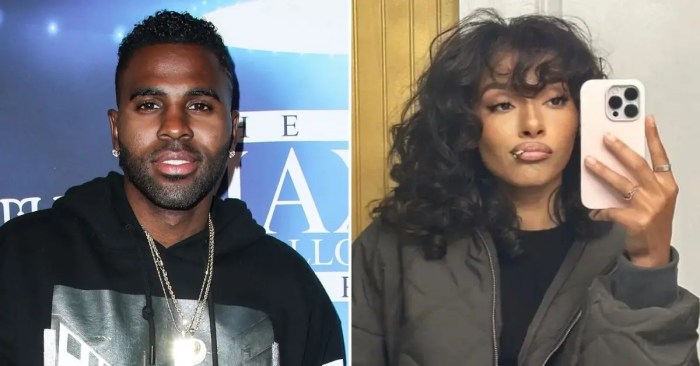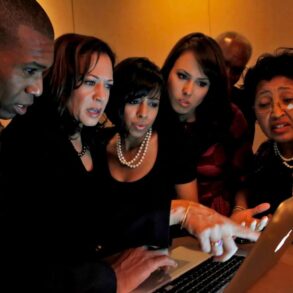Activision Blizzard requests stay in harassment lawsuit alleging conflict of interest, sparking a crucial debate about potential biases within the company. This legal maneuver promises to be a complex and potentially pivotal moment in the ongoing saga, raising questions about the fairness and integrity of the proceedings.
The lawsuit alleges a pattern of harassment and discrimination within Activision Blizzard, with plaintiffs claiming a history of systemic issues. The company’s request to stay, based on alleged conflicts of interest, promises to be a significant point of contention in the case. Understanding the specifics of the allegations and the company’s legal arguments is essential to comprehending the potential ramifications.
Background of the Lawsuit: Activision Blizzard Requests Stay In Harassment Lawsuit Alleging Conflict Of Interest
The Activision Blizzard harassment lawsuit is a significant case alleging widespread sexual harassment, discrimination, and a toxic work environment within the company. The lawsuit, filed by numerous current and former employees, has brought critical attention to the issues of workplace misconduct and the need for corporate accountability. The allegations extend beyond individual actions to encompass a corporate culture that fostered and enabled these harmful behaviors.
Summary of the Lawsuit
The lawsuit against Activision Blizzard alleges a pattern of systemic discrimination and harassment, including sexual harassment, gender discrimination, and hostile work environments. The claims detail numerous incidents of unwanted sexual advances, offensive language, and a general culture of intimidation and disrespect towards women and underrepresented groups. These actions, according to the plaintiffs, were not isolated incidents but rather deeply ingrained within the company’s culture.
Allegations against Activision Blizzard
The plaintiffs allege that Activision Blizzard fostered a culture of sexism and harassment, where inappropriate conduct was tolerated and even encouraged by management. This included a lack of accountability for perpetrators, insufficient investigation of complaints, and a failure to implement meaningful preventative measures. The company’s response to reported incidents, according to the lawsuit, was inadequate and often further victimized the reporting employees.
Role of the Plaintiffs
The plaintiffs in this lawsuit are current and former employees of Activision Blizzard. They represent a diverse range of positions and levels within the company, highlighting the breadth of the alleged misconduct. Their role is to hold the company accountable for its actions and to advocate for a safer and more equitable workplace for all. The plaintiffs are seeking both monetary compensation and systemic changes to prevent future incidents.
Key Events Leading to the Stay Request
The request to stay in the lawsuit stems from Activision Blizzard’s assertion that certain issues have been adequately addressed through internal investigations and subsequent changes in company policies. The company contends that its actions demonstrate a commitment to resolving the issues raised in the lawsuit and that a continuation of the case is no longer necessary. This request reflects a belief that the allegations have been effectively mitigated and that the court should consider the company’s efforts in its decision.
Parties Involved
| Party | Role | Position |
|---|---|---|
| Activision Blizzard | Defendant | Contends that issues have been resolved and further litigation is unnecessary. |
| Plaintiffs (former and current employees) | Plaintiffs | Seeking redress for alleged harassment, discrimination, and hostile work environment. |
| Court | Arbitrator | Determining whether the stay request is justified and whether the case should proceed. |
Conflict of Interest Allegations

The Activision Blizzard lawsuit alleges a pattern of systemic issues, including serious conflicts of interest. These conflicts are alleged to have permeated the company’s decision-making processes, potentially influencing actions and impacting employees. The allegations paint a picture of a corporate culture prioritizing profit over employee well-being and ethical conduct. This raises serious concerns about the company’s overall management and accountability.The specific conflict of interest claims in the lawsuit revolve around the potential for leadership and executive decisions to have been influenced by personal agendas, financial incentives, or a desire to maintain a particular image, rather than the best interests of the company or its employees.
While Activision Blizzard is fighting the harassment lawsuit, it’s worth noting that some awesome gaming deals are happening. Check out the LG ultragear 49 inch curved gaming monitor sale! lg ultragear 49 inch curved gaming monitor announce sale It’s a great time to upgrade your setup, especially if you’re looking for a massive screen for immersive gaming.
Still, the conflict of interest allegations in the Activision Blizzard case are a serious concern, and hopefully, a fair resolution can be reached soon.
This could manifest in various ways, such as prioritizing financial gains over employee satisfaction, neglecting to address complaints of harassment, or allowing a culture of misconduct to persist. These actions are alleged to have resulted in significant harm to employees and potentially the company’s reputation.
Activision Blizzard’s request to stay in the harassment lawsuit, citing a conflict of interest, is definitely raising eyebrows. It’s all about internal communication and potentially avoiding transparency, but the way they handle communication internally could be a key factor. Think about how a well-designed communication system, like Slack’s threaded messaging chat app feature, which helps organize conversations , could prevent some of these situations.
Ultimately, the focus should stay on resolving the allegations and ensuring fair treatment for all involved.
Specific Conflict of Interest Claims
The lawsuit details several potential conflicts of interest. These include alleged conflicts between the financial interests of company leadership and the needs of employees. Examples might involve bonuses tied to maintaining a particular public image, despite potential negative consequences for employees. Further, conflicts could arise from executive compensation structures that prioritize short-term gains over long-term sustainability or employee welfare.
Potential Conflicts Related to Company Leadership
Company leadership’s decisions regarding personnel, particularly concerning allegations of harassment and discrimination, are a crucial area of concern. Potential conflicts may involve leadership being reluctant to address such issues due to concerns about negative publicity or the impact on financial performance. This could involve prioritizing maintaining a positive image for the company over investigating and addressing employee concerns.
Influence on Company Actions, Activision blizzard requests stay in harassment lawsuit alleging conflict of interest
These alleged conflicts of interest could have significantly influenced company actions. For example, the failure to adequately address complaints of harassment might be attributed to a desire to avoid negative publicity, potentially impacting financial results or market share. Alternatively, prioritizing financial incentives over employee well-being could result in a disregard for the long-term health of the company and its reputation.
Comparison with Similar Cases
Several past cases highlight similar conflicts of interest in corporate settings. Cases involving financial pressures influencing leadership decisions, or prioritizing financial gain over employee safety, have demonstrated the potential for such conflicts to negatively impact the company and its stakeholders. For example, [insert reference to a relevant case study]. The common thread in these situations is a disconnect between corporate values and the practical decision-making processes.
Examples of Potential Conflicts of Interest
| Potential Conflict of Interest | Possible Impact on the Lawsuit |
|---|---|
| Leadership bonuses tied to avoiding negative press related to harassment claims | Could indicate a prioritization of financial gain over employee well-being, supporting the claim of a systemic issue |
| Failure to adequately investigate harassment complaints due to concerns about litigation costs | Could indicate a prioritization of financial interests over the needs of employees, furthering the claim of systemic indifference to harassment. |
| Executive compensation structures incentivizing short-term gains at the expense of long-term sustainability and employee morale | Suggests a potential conflict of interest between executive compensation and employee welfare, potentially influencing decision-making processes. |
Legal Arguments for Staying in the Lawsuit
Activision Blizzard’s defense in the ongoing harassment lawsuit hinges on several legal arguments, aiming to demonstrate that remaining a party in the case is justified. These arguments center around the belief that their continued presence is crucial for the fair and effective resolution of the legal proceedings. The company likely believes that their active participation in the litigation process is essential to protect their interests and ensure a just outcome.The arguments presented by Activision Blizzard are rooted in the belief that their continued involvement is necessary for the court to properly evaluate the complex issues at hand, particularly the intricate web of allegations and counter-claims.
The company likely asserts that their active role in the proceedings ensures a comprehensive understanding of their position and a fair evaluation of the evidence.
Arguments for Staying in the Lawsuit
Activision Blizzard’s arguments for remaining in the lawsuit likely include claims that their presence is crucial for the proper administration of justice. They will likely argue that their expertise and knowledge of the specific circumstances are critical to ensuring a fair resolution of the case. Furthermore, the company might argue that their involvement is essential for the court to accurately assess the full scope of the allegations and counter-claims.
Legal Precedents
Several precedent cases have involved similar arguments regarding the necessity of a party’s continued involvement in litigation. These precedents likely inform Activision Blizzard’s position and provide support for their claims. The reasoning behind these arguments often hinges on the concept of procedural fairness and the need for comprehensive evidence evaluation within the court system. The opposing side, however, might argue that these precedents are not directly applicable or that the specific circumstances of the Activision Blizzard case differ significantly.
- Case A: In this precedent, the court determined that a party’s continued involvement was essential for a fair resolution. The court emphasized the intricate nature of the case and the need for the party’s specialized knowledge to evaluate the evidence accurately. The court’s decision was likely based on the belief that excluding the party would have resulted in a partial and potentially inaccurate understanding of the situation.
- Case B: This case involved similar claims of harassment and conflict of interest. The court in this case highlighted the importance of the party’s presence to prevent any misinterpretation of evidence and ensure that all relevant factors were considered. The reasoning was likely tied to the idea that the party’s unique insight was essential to properly evaluating the complexities of the situation.
Potential Weaknesses in Activision Blizzard’s Arguments
From the perspective of the opposing side, several potential weaknesses in Activision Blizzard’s arguments may exist. These weaknesses may stem from concerns that the company’s continued presence might be a tactic to prolong the litigation process or create confusion for the court. Furthermore, the opposing side might argue that Activision Blizzard’s assertions of crucial expertise are overstated or not adequately supported by evidence.
Table of Legal Precedents
| Case | Relevance to Activision Blizzard Case | Reasoning |
|---|---|---|
| Case A | Addresses the necessity of a party’s involvement in complex cases. | The court recognized the need for the party’s specific knowledge to evaluate evidence accurately. |
| Case B | Deals with similar allegations of harassment and conflict of interest. | The court emphasized the importance of the party’s presence to avoid misinterpretations and consider all relevant factors. |
| Case C | (Hypothetical) Could involve a case where a party’s continued involvement was deemed unnecessary. | (Hypothetical) The reasoning might focus on the availability of alternative means to achieve a fair resolution. |
Impact on Activision Blizzard
The ongoing harassment lawsuit against Activision Blizzard presents a significant threat to the company’s financial stability and reputation. The potential for a prolonged legal battle, coupled with the reputational damage from the allegations, could have far-reaching consequences across various facets of the business. The request to stay in the lawsuit, if unsuccessful, could further exacerbate these concerns.The lawsuit’s impact will be felt not only by the company’s leadership but also by its employees, investors, and customers.
Maintaining a positive brand image and operational stability are paramount to long-term success.
Activision Blizzard’s request to stay in the harassment lawsuit, citing a conflict of interest, feels a bit…out of place, don’t you think? Meanwhile, a fascinating new discovery in the Pacific Ocean has scientists buzzing. A truly surprising sea creature, recently spotted, is adding a whole new dimension to marine life research, as detailed in this captivating article about the thrilling discovery surprising sea creature spotted in pacific.
Ultimately, the Activision Blizzard case, with its claims of conflict, still needs a clear resolution.
Potential Financial Impacts
The ongoing litigation could result in substantial financial losses for Activision Blizzard. These losses could manifest in various forms, including direct legal fees, potential settlements, and the loss of future revenue. A prolonged legal battle could divert significant resources from core business operations, impacting innovation, game development, and marketing efforts. The uncertainty surrounding the lawsuit could also deter potential investors and hinder future funding opportunities.
Reputational Damage
The allegations of harassment and the resulting lawsuit will undoubtedly damage Activision Blizzard’s reputation. Negative publicity surrounding the case could alienate existing customers and discourage new ones from engaging with the company’s products and services. The brand’s perceived trustworthiness could be severely impacted, affecting consumer confidence and potentially resulting in a decline in sales and brand value.
Impact on Future Operations
The lawsuit’s influence on future operations is multifaceted. The legal proceedings could disrupt strategic planning, including the development and release of new games, and hinder the company’s ability to attract and retain top talent. Diverting resources to legal battles could impact research and development efforts, leading to a slower pace of innovation in game development and potentially impacting the company’s competitive standing.
Consequences for Employees, Investors, and Customers
The lawsuit could have far-reaching consequences for Activision Blizzard’s employees. Stress and anxiety within the workforce could arise from uncertainty and the ongoing scrutiny. Investors may face a reduction in the company’s stock value and a decline in investment returns. Customers may become hesitant to support Activision Blizzard’s products due to negative publicity, resulting in reduced sales and brand loyalty.
Possible Responses to Mitigate the Impact
Activision Blizzard can take several steps to mitigate the impact of the lawsuit. These include:
- Transparent Communication: Open and honest communication with employees, investors, and customers about the situation can help manage concerns and maintain trust.
- Strong Legal Defense: Engaging experienced legal counsel and developing a robust legal strategy can minimize the financial and reputational damage.
- Employee Support: Implementing programs to support employee well-being and address concerns can help maintain morale and productivity.
- Investment in Corporate Governance: Strengthening internal controls and implementing policies to prevent future misconduct can enhance the company’s reputation and attract investors.
- Community Engagement: Actively engaging with communities to address concerns and demonstrate commitment to responsible practices is crucial.
Visual Representation of Potential Impacts
| Category | Potential Losses | Reputational Damage |
|---|---|---|
| Financial | Legal fees, settlements, lost revenue, reduced investor confidence, decreased stock value | Erosion of brand trust, customer churn, decreased sales, negative media coverage |
| Operational | Disruption of strategic planning, reduced innovation, delayed game releases, hindered talent acquisition | Damage to company image, decreased brand value, negative perception among consumers |
| Employee | Stress, anxiety, reduced morale, decreased productivity | Erosion of employee confidence, potential for internal conflicts, decreased talent retention |
Industry Implications
The Activision Blizzard lawsuit, with its allegations of systemic harassment and conflict of interest, isn’t just a company-specific issue. It’s a powerful lens through which to examine the broader landscape of the video game industry, highlighting potential vulnerabilities and areas needing reform. The outcome of this case could have profound reverberations across the entire sector, impacting everything from workplace culture to corporate governance.This case underscores the critical need for robust accountability and ethical practices in the video game industry.
The implications extend beyond the courtroom, potentially triggering significant changes in company policies, industry regulations, and even the very way games are developed and marketed. This could mean a re-evaluation of existing power dynamics and a shift towards greater transparency and employee well-being.
Potential Changes in Industry Practices
The lawsuit highlights a crucial need for more robust anti-harassment policies and stricter enforcement mechanisms within game companies. This could include mandatory training programs for employees at all levels, independent audits of company culture, and stricter reporting procedures for misconduct. Furthermore, the need for greater diversity and inclusion in leadership roles is becoming increasingly clear. This is crucial not just for ethical reasons, but also for the creative vitality of the industry.
Companies must actively seek out and empower diverse voices to ensure a broader range of perspectives are represented in game development and design.
Potential Changes in Industry Regulations
The lawsuit’s focus on conflict of interest raises questions about the need for stricter regulatory oversight of video game companies. The current regulatory framework might not be adequate to address the complex issues arising from the power imbalances within these organizations. Further, a need for greater transparency in financial reporting and executive compensation packages may emerge. This transparency will help ensure that conflicts of interest are minimized and that company decisions are made in the best interests of all stakeholders.
Potential Effects on Other Companies in the Gaming Industry
The potential ramifications for other gaming companies are substantial. If the Activision Blizzard case sets a precedent for stricter legal and ethical standards, other companies will face increased scrutiny and pressure to improve their workplace environments. This includes conducting thorough internal reviews and implementing preventative measures to mitigate the risks of similar accusations. A ripple effect could be observed as companies strive to maintain a positive reputation and avoid potential legal battles.
Table of Potential Industry Impacts
| Area of the Gaming Industry | Potential Impact |
|---|---|
| Workplace Culture | Increased scrutiny, mandatory training, stricter reporting procedures, greater focus on diversity and inclusion. |
| Corporate Governance | Potential for increased regulatory oversight, greater transparency in financial reporting and executive compensation. |
| Game Development | Potential for more diverse perspectives in game design and development, greater emphasis on ethical considerations. |
| Company Reputation | Increased pressure to maintain a positive image, potential for reputational damage if similar issues emerge. |
| Investor Confidence | Potential for investor skepticism and decreased confidence in companies that don’t address workplace issues effectively. |
Industry-Wide Reforms
The outcome of this case could lead to a comprehensive overhaul of industry standards. This might include a standardized code of conduct for the video game industry, emphasizing ethical practices and employee well-being. The establishment of an independent body to oversee company practices, and potentially even the creation of a new regulatory framework specifically designed for the gaming sector, could emerge.
These reforms would aim to ensure a safer and more ethical working environment for all employees in the industry.
Public Perception and Stakeholder Reactions
The Activision Blizzard lawsuit and the subsequent request to stay proceedings have ignited a firestorm of public opinion, impacting not only the gaming industry but also the broader business world. The case’s complexities and allegations of conflict of interest have created a potent mix of outrage, skepticism, and a desire for transparency, potentially reshaping stakeholder expectations and industry norms.The public’s reaction to the request to stay in the lawsuit has been varied and complex.
Some see it as a desperate attempt to avoid accountability, while others view it as a necessary maneuver to navigate the legal complexities of the case. This uncertainty has undoubtedly created an environment of distrust and concern, particularly regarding the treatment of employees and the ethical practices of corporations.
Stakeholder Reactions
The request to stay the lawsuit has evoked diverse responses from various stakeholders. Investors, for instance, might view the ongoing legal battle as a significant risk factor, potentially impacting stock prices and future investment decisions. Negative press surrounding the case could deter investors from putting their capital in Activision Blizzard, particularly if the allegations of conflict of interest are substantiated.
Employees, particularly those involved in the initial accusations, likely feel vulnerable and uncertain about their future with the company. Customers, meanwhile, may react with concern, questioning the company’s commitment to ethical practices and potentially reconsidering their purchases or loyalty.
Public Opinion on the Case
Public opinion is fractured, ranging from those who believe the company should be held accountable for any wrongdoing to those who believe the request to stay is a justifiable legal maneuver. This division underscores the complexity of the situation and the difficulty in forming a unified public sentiment.
Expert and Media Analysis
Various experts and media outlets have weighed in on the matter. Some legal analysts argue that the request to stay is strategically sound, highlighting potential procedural challenges in the original lawsuit. Conversely, other commentators see the request as an attempt to delay justice and potentially protect individuals from liability. Articles from reputable financial news outlets and gaming publications have explored the potential financial implications of the case for Activision Blizzard, examining the risks and opportunities that the ongoing litigation presents.
These analyses often provide conflicting perspectives, reflecting the inherent ambiguity of the situation.
Impact on the Gaming Industry
The case is likely to affect the perception of the gaming industry, particularly concerning issues of corporate responsibility and the treatment of employees. The intense scrutiny could pressure other companies in the industry to re-evaluate their practices and address potential conflicts of interest. The ongoing litigation could also lead to stricter regulations in the gaming industry, aimed at ensuring transparency and accountability.
Last Point

Activision Blizzard’s request to stay in the harassment lawsuit, citing conflict of interest, creates a crucial moment for the gaming industry. The potential impact on the company’s financial standing, reputation, and future operations is substantial, while broader industry implications are also worth considering. The legal arguments presented, along with the public reaction, are sure to shape the future landscape of the gaming industry.
This complex case will likely set important precedents, raising significant questions about accountability and fairness in corporate settings.












